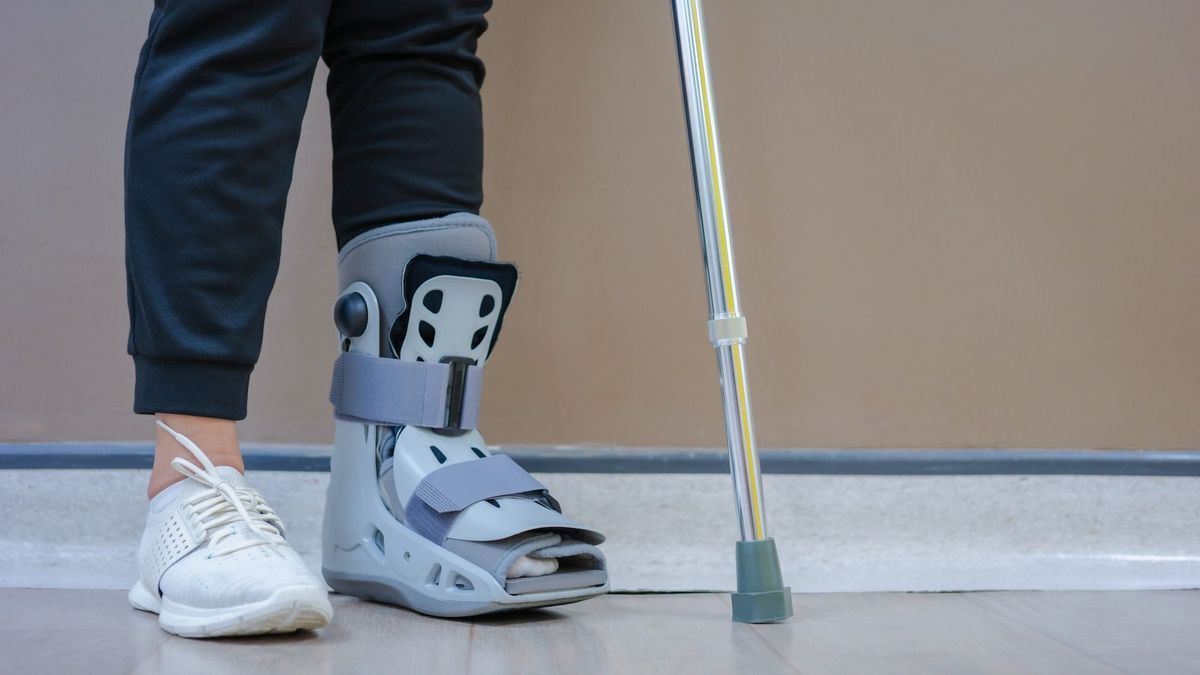
The walking boot, or orthopedic boot, is a medical device prescribed in the event of a foot or ankle fracture. Tour of its indications and advantages with Dr Philippe Loriaut, orthopedic surgeon in Paris.
Definition: what is a walking boot or orthopedic boot?
The walking boot is an orthopedic medical device whose purpose is to immobilize a bone segment or a joint by immobilizing the leg, ankle and foot. It represents a modern alternative to the plaster or resin boot which turns out to be much more restrictive. Walking boots are rigid or semi-rigid devices, most often made of PVC, with foam reinforcements inside, which allows perfect adaptation to the patient’s morphology.
Short or long medical boot, the different models
There are different models in short version and long version. “Short models are mainly used to treat pathologies of the midfoot or forefoot, and long models are used more for pathologies of the leg and ankle. Some walking boots are inflatable, which creates compression around the leg and ankle, helping to reduce edema and improve blood circulation”explains Dr Philippe Loriaut.
When and why to wear a walking boot?
Sprain, ankle fracture, broken foot…What are the indications?
The walking boot is mainly indicated in the following cases:
- Sprains ;
- An ankle fracture that is not displaced: “Weight-bearing is not necessarily possible immediately but immobilization is very satisfactory. As the fracture consolidates, it will be possible to achieve full weight-bearing”explains the orthopedic surgeon;
- A rupture of the Achilles tendon: “In this case, we have the possibility of adding small heel pads inside the walking boot in order to place the ankle in equinus and leave the tendon in a resting position so that it can heal. heel pads are removed gradually in order to find a right angle”, develops our expert;
- Post-operatively: In the event of necessary immobilization, the boot allows for a relay while the patient recovers his functions.
What are the advantages of the walking boot compared to a cast or resin boot?
The walking boot has the advantages of total immobilization because the joint does not move at all, without the disadvantages of a plaster or resin boot. It is possible to remove your walking boot to take a shower and receive nursing care (wound or scar), which is impossible with a plaster or resin boot. The orthopedic boot also prevents skin irritations and cases of edemawhich are common with a plaster or resin boot.
Can I walk in a walking boot? Can you walk without a crutch with an orthopedic walking boot?
The major advantage of the orthopedic boot is that it allows, depending on the indication, to place your foot on the ground without a crutch, which is impossible with a plaster or resin boot, which requires you to keep the boot on for weeks without any support. It is also forbidden to wet the plaster, which complicates things. “Especially since wearing a plaster or resin boot requires the prescription of an anticoagulant treatment in order to thin the blood and avoid phlebitis problems. Which is not the case with the boot orthopedic which helps activate blood circulation and resume walking more quickly“argues Dr Philippe Loriaut.
The main advantage of this device therefore lies in the fact that it promotes the patient’s autonomy since they will be able to move around without a crutch and leave their home more easily. Another significant advantage, the orthopedic boot is equipped witha non-slip surface to prevent slipping while a plaster boot necessarily requires the use of crutches, because you can easily fall or become unbalanced.
What are the disadvantages of walking boots?
The only downside to the walking boot is that unfortunately it cannot be used for all types of fractures. “In the event of a fracture of the leg or tibia for example, immobilization will not be sufficient because this type of fracture is unstable and risks moving. A crucropedal cast will be required, that is to say one which starts at the top of the thigh and goes down to the foot, indicates the specialist. The orthopedic boot cannot always be used directly after an operation such as ankle ligamentoplasty (operation carried out in cases of repeated ankle sprains to rebuild the ligaments), because the ankle is often swollen the first week following the operation.. A resin splint is put in place the first week while waiting for the edema to resolve.
Can you take off a walking boot to sleep?
The walking boot must be worn 24 hours a day to promote healing. It is therefore not recommended to remove it, unless advised otherwise by your doctor.
